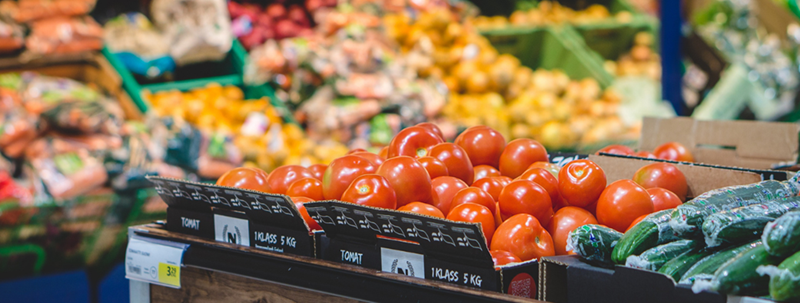Food Loss Prevention Options for Grocery Stores
Food Loss Prevention Options for Grocery Stores
Information about Actions to Prevent Creation of Food Waste
for Grocery Stores and Supermarkets
[as required by Title 14 of the California Code of Regulations Section 18985.2(b)(1)(D) Edible Food Recovery Education and Outreach]
Click here to open the printable document for preventing food waste in grocery stores and supermarkets.
What is the new law?
Who does this apply to?
-
Commercial edible food generators, which includes most grocery stores and supermarkets, can help meet this goal by taking actions that prevent the creation of food waste. Information provided in the guide should be considered and incorporated into your operations as appropriate.

Date Marking Tips
Date marking tips for helping customers reduce food waste at home:
-
Clarify date labeling to reduce confusion for customers. Understanding dates printed on food packaging will help reduce edible food from being discarded early (e.g., create signage that explains the difference between expiration dates and quality dates)
-
Use more “freeze by” dates where applicable
-
Remove quality dates from shelf-stable non-perishable foods, if appropriate
-
Make sure all printed dates on products have descriptive language, not just a date
Purchasing Tips
-
Take an accurate inventory before placing an order
-
Buy surplus or odd shaped produce that would otherwise be wasted and sell them at a discount
-
Send order estimates to suppliers to better align production planning with order timings
-
Communicate on strategies with suppliers to reduce food waste
-
Revise your supply contracts to require the supplier to have a food waste reduction or food donation program
-
Change contracts to include methods that prevent food loss (e.g., use packaging techniques such as vacuum sealing meat)
-
Make food waste reduction a key performance indicator in operations
Prep and Storage Tips
-
Maximize leftovers (e.g., Steak one day can be used for beef stew the next day)
-
Train on knife skills to make more efficient knife cuts that use more of the food being prepared
-
Use as much of an item as possible (e.g., Leave the peels on cucumbers or potatoes)
-
Train staff on product rotation; FIFO (first in first out)
-
Marinate meats to extend their shelf life, if appropriate
-
Extend shelf life by reviewing proper food storage techniques with staff
-
Use see-through storage containers to track availability and freshness
-
Cook, freeze or juice foods that are approaching the end of their peak freshness to prolong their useful life
Store Display Tips
- Set up a discount shelf for ripe, near-to-expire, or discontinued (safe) food. Provide signage or labeling about this reduced-price section.
- Redesign product displays with less items. (e.g., use a back support design in the produce area to create the illusion of piles of fruit).
- Allow prepared foods to run out near store closing. Track these items and only make as much as you can sell.
General tips for helping customers reduce food waste at home
- Provide taste samples. Offer customers samples to see if they like a product before they buy it to prevent potential waste at home.
- Provide guides on best storage practices for all foods, including how long food should last when stored properly.
- Offer various options to your customers on produce (e.g., whole, sliced and mixed fruit). This will assist them in eliminating food loss in their own homes.